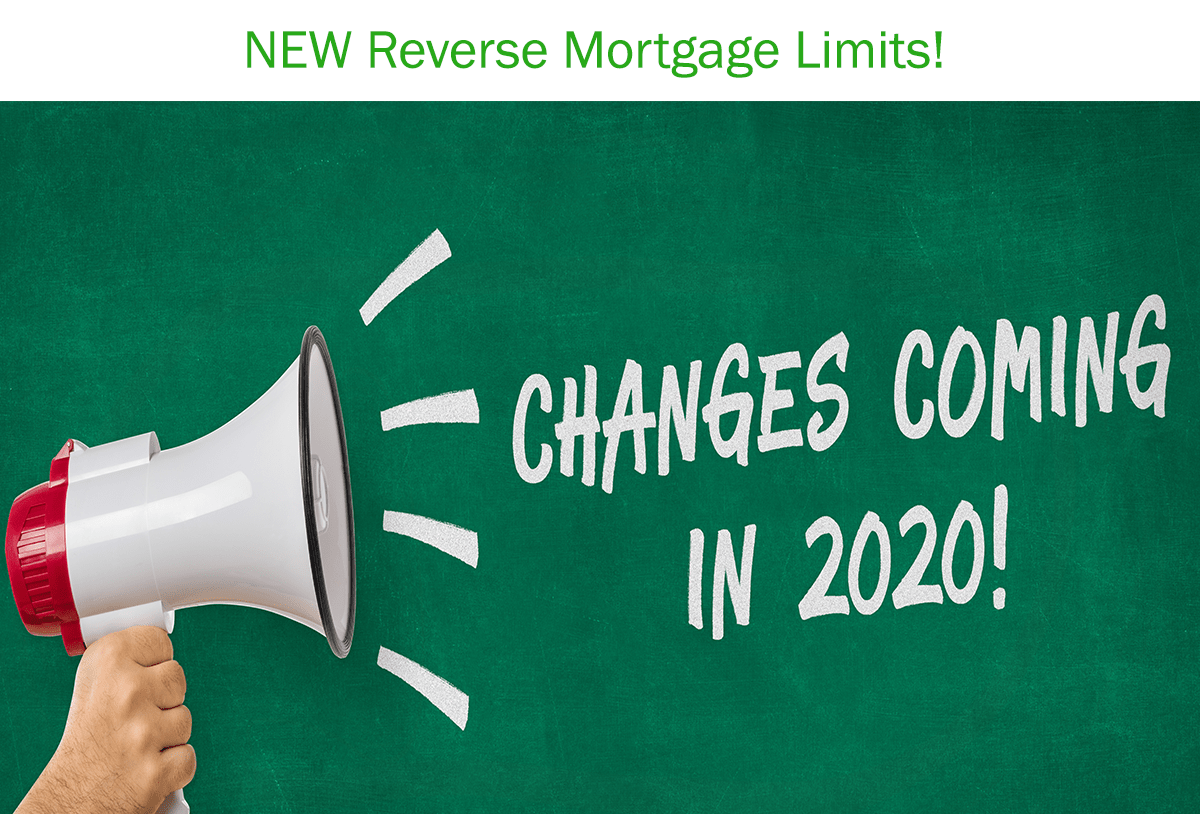2020 Reverse Mortgage Limits Soar to $765,600!
Mike Branson Jr. – Author
Mike Branson Jr. has 25 years of experience in the mortgage banking industry. He has devoted the past 19 years to reverse mortgages exclusively. Mike has worked in several aspects of the Mortgage industry, including Loan Origination, Underwriting, and Management.In early December, the U.S. Department of Housing and Urban Development (HUD) announced that the lending limit for Home Equity Conversion Mortgages (HECMs) ? the federally-backed reverse mortgage program ? will increase for the fourth year.
Beginning on January 1, 2020, the lending limit for government-insured reverse mortgages will be $765,600, marking an increase of $39,075 from the lending limit HUD set for 2019. HUD announced the revised lending limit for 2020 in an officially released Mortgagee Letter (ML).

The amount of growth exhibited in the lending limits over the past few years marks a very different status quo than what the reverse mortgage business saw in years past. In 2009, HUD handed down a lending limit of $625,500, which remained in place for the following eight years.
Then, in 2017, the lending limit saw its first increase since the days of the American Recovery and Reinvestment Act following the 2008 financial crisis.
History of HECM Reverse Mortgage Lending Limits |
- 2009-2016 | $625,500
- 2018 | $679,650
- 2019 | $726,525
- 2020 | $765,600
- 2021 | $822,375
- 2022 | $970,800
- 2023 | $1,089,300
- 2024 | $1,149,825
What These New Limits Mean for Borrowers
Suppose you’re a prospective reverse mortgage borrower with a home valued at or around the new 2020 lending limit. The new MCA will allow you to borrow more money in a reverse mortgage transaction.
Remember, the amount of money you can borrow is directly influenced by current interest rates, your home value, and your age at the time the loan originated; younger borrowers qualify for generally lower proceeds when compared with older borrowers.
If a borrower is 65 when they take out a reverse mortgage loan, then that borrower may be able to borrow up to 55% of the home’s total value in reverse mortgage loan proceeds. Under the 2019 limits, a borrower with a home valued at $765,600 or more would be eligible for up to $398,862 in loan proceeds.
Under the 2020 limits, however, that same borrower would be eligible for $22,415 more, with proceeds going up to $421,080 under the new limits. However, if a borrower is much older, that same value home can net as much as $28,415 more in loan proceeds if they’re at least 85 years old.
That means that these new limits can undoubtedly make a significant difference in the ability of borrowers to earn more money in loan proceeds. Still, some potential rule changes could come in the future that may significantly change the program ? and the amount of money someone can borrow through it.
Proposed Regional Lending Limits
In recent years, the HECM program has endured some financial instability regarding its effect on Uncle Sam’s finances. That instability has led many people, from government analysts to think tank researchers, to try and find ways to stabilize the HECM program so that its financial health can allow it to exist long into the future.
One of the suggestions made by officials from the Trump Administration in the White House saims specifically at lending limits and ways that they can be changed to improve the overall financial stability of the reverse mortgage program.
Specifically, instead of using one national lending limit, a suggestion calls on HUD to institute lending limits that are more closely aligned with the region in which a borrower lives.
“Congress should revise the loan limit structure in the HECM program to reflect variation in local housing markets and regional economies across the United States instead of the current national limit set to the level of high-cost markets in the forward program,” reads the White House proposal released in September. – Source Forbes “Changes May Be Coming To Reverse Mortgage Rules, But What Do They Mean?”
It’s not clear how committed members of Congress would be to such a change, which would require their approval before such a proposal could be put into practice. Nevertheless, it’s an option on the table and could affect the amount of money potential reverse mortgage borrowers could access.
Private reverse mortgages
Suppose you find yourself concerned about the lending limits for the government-sponsored HECMs. In that case, you may want to investigate an alternative reverse mortgage option, such as a private/proprietary loan from a reverse mortgage lender.
Private reverse mortgages have much higher loan limits than the federally insured program. They are not prone to the changes inherent in the HECM program, though many private options try to emulate the most well-liked features of traditional HECMs.
Summary
To learn more about how a HECM loan might be right for you, contact one of our Top Reverse Mortgage Lenders or check your eligibility with our free reverse mortgage calculator.
|
No Comments on “2020 Reverse Mortgage Limits Soar to $765,600!”
|

